Reducing biting rates of Aedes aegypti with metofluthrin: investigations in time and space
- PMID: 28173824
- PMCID: PMC5297195
- DOI: 10.1186/s13071-017-2004-0
Reducing biting rates of Aedes aegypti with metofluthrin: investigations in time and space
Abstract
Background: Indoor residual spraying is key to dengue control in Cairns and other parts of northern Queensland, Australia, where Aedes aegypti is prevalent, but the strategy faces challenges with regards to slow application time and, therefore, community coverage. A faster potential improvement might be the use of polyethylene netting impregnated with the volatile pyrethroid metofluthrin (SumiOne™). This formulation was assessed in rooms in three houses in Cairns, Australia. One emanator was placed in each room and cages of 10 female Aedes aegypti were exposed at distances of 1 and 3 m. Knockdown and landings on a human hand were counted before metofluthrin exposure and at 10, 30, 60, 90 and 120 min during exposure. In addition, two trials continued over 48 h of exposure to assess the long-term sublethal effects of metofluthrin on caged mosquitoes.
Results: Percentage landing rates fell to 0-2.5% in the first 10 min of exposure. Knockdown was most evident between 10 and 30 min (54% at 1 m and 33% at 3 m). Distance from the emanator strongly affected the results: mosquitoes at 3 m exhibited less knockdown and more landings than those at 1 m. As room volume increased, knockdown decreased and the number of landing increased. There is a cumulative mortality and landing inhibition and, for mosquitoes exposed to metofluthrin for > 48 h, mortality was 100% at 1 m and 90% at 3 m. Of those still alive, a small number continued to land and bite. After being removed from metofluthrin-treated rooms, exposed insect cages were found to reducing landing rates for up to 2 h.
Conclusions: Despite only moderate levels of knockdown during the initial hours of exposure, metofluthrin emanators were effective in reducing mosquito landing rates, especially within 1 m, even when exposed on an open veranda. The evaluation methods and results described in this paper will help inform the optimal conditions of deployment of metofluthrin emanators. These devices have the potential to reduce contact between humans and urban disease vectors faster than indoor residual spraying so supplement our current arsenal of dengue control tools.
Keywords: Aedes aegypti; Dengue; Metofluthrin; Vector control; Volatile pyrethroids.
Figures
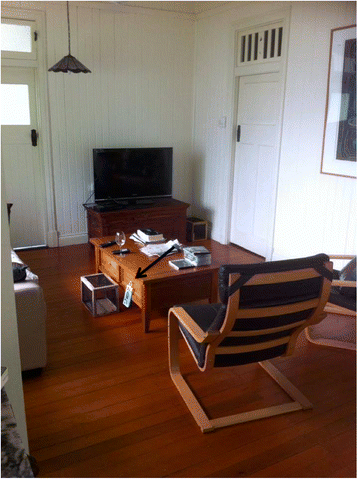
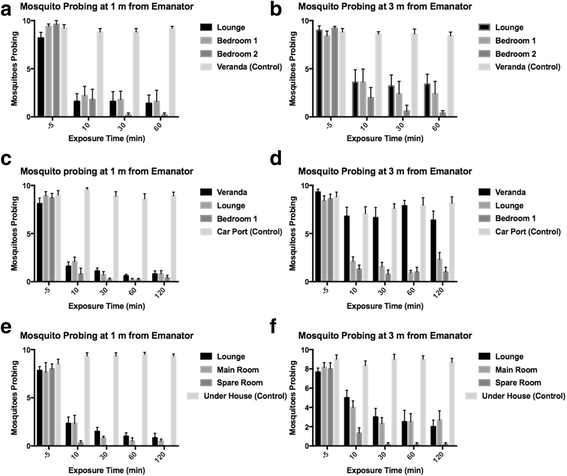
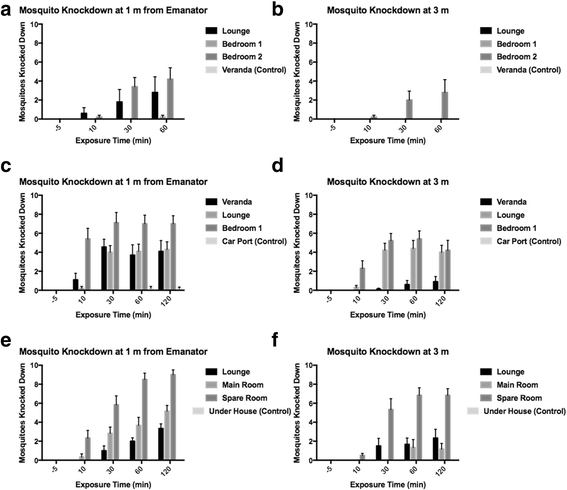
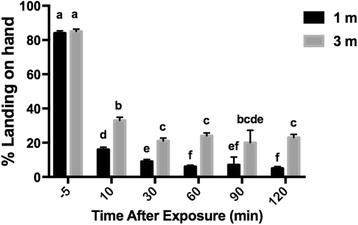
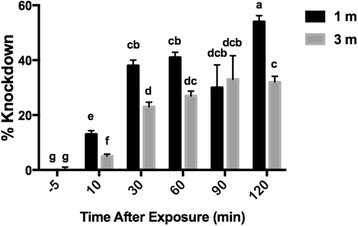

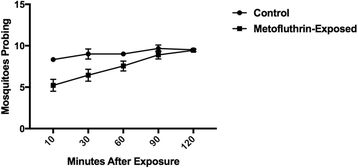
References
-
- Ritchie S, Hanna J, Hills S, Piispanen J, McBride W, Pyke A, et al. Dengue control in North Queensland, Australia: case recognition and selective indoor residual spraying. Dengue Bull. 2002;26:7–13.
MeSH terms
Substances
LinkOut - more resources
Full Text Sources
Other Literature Sources
Medical
Research Materials

